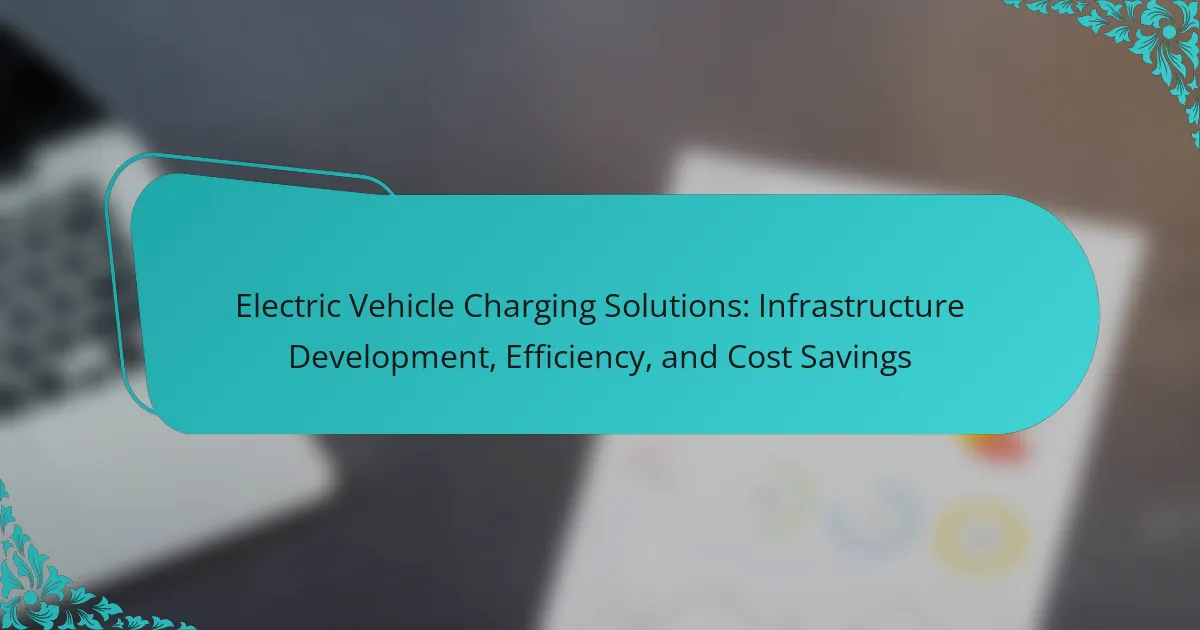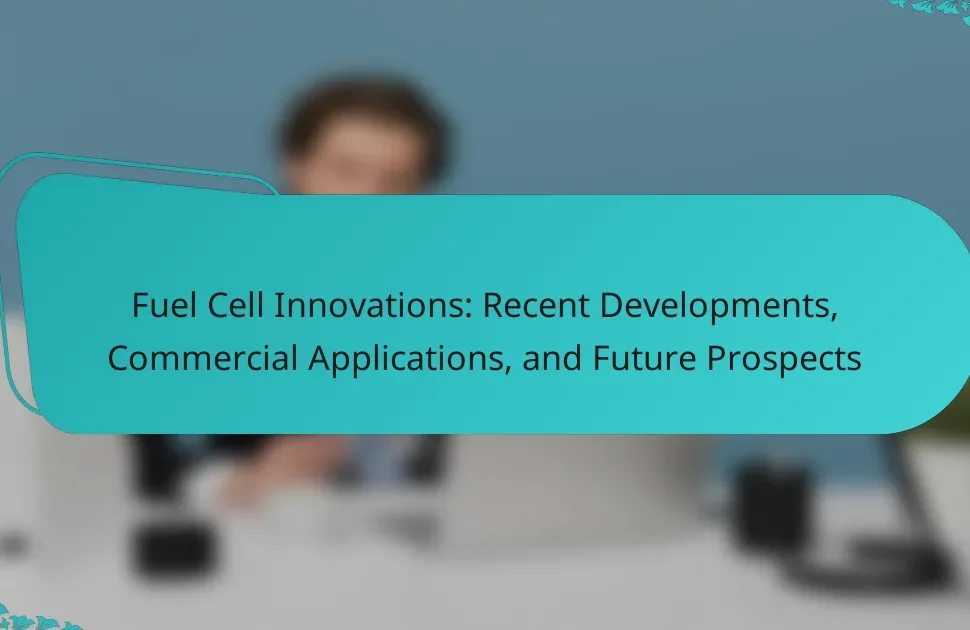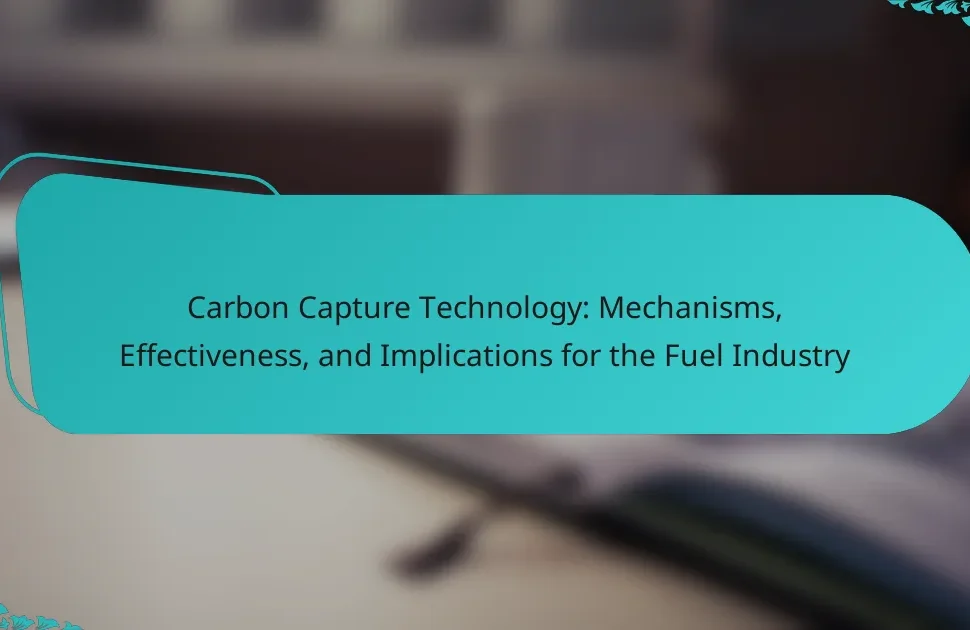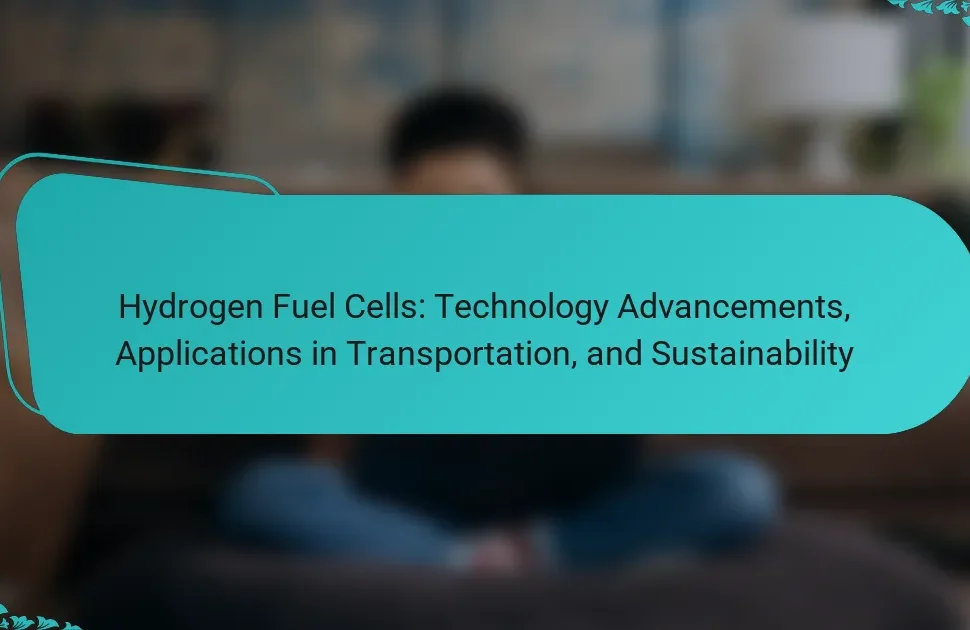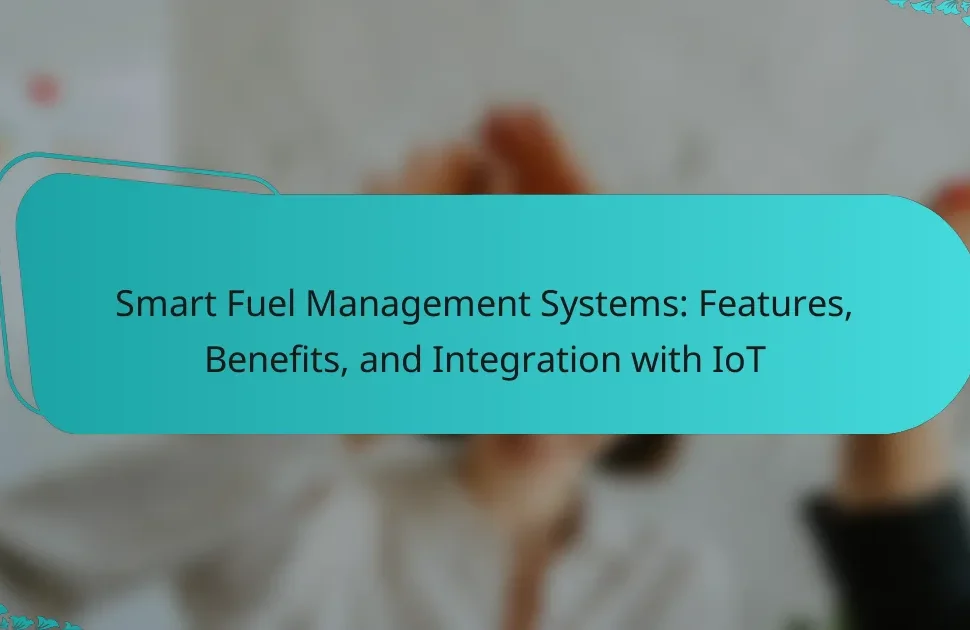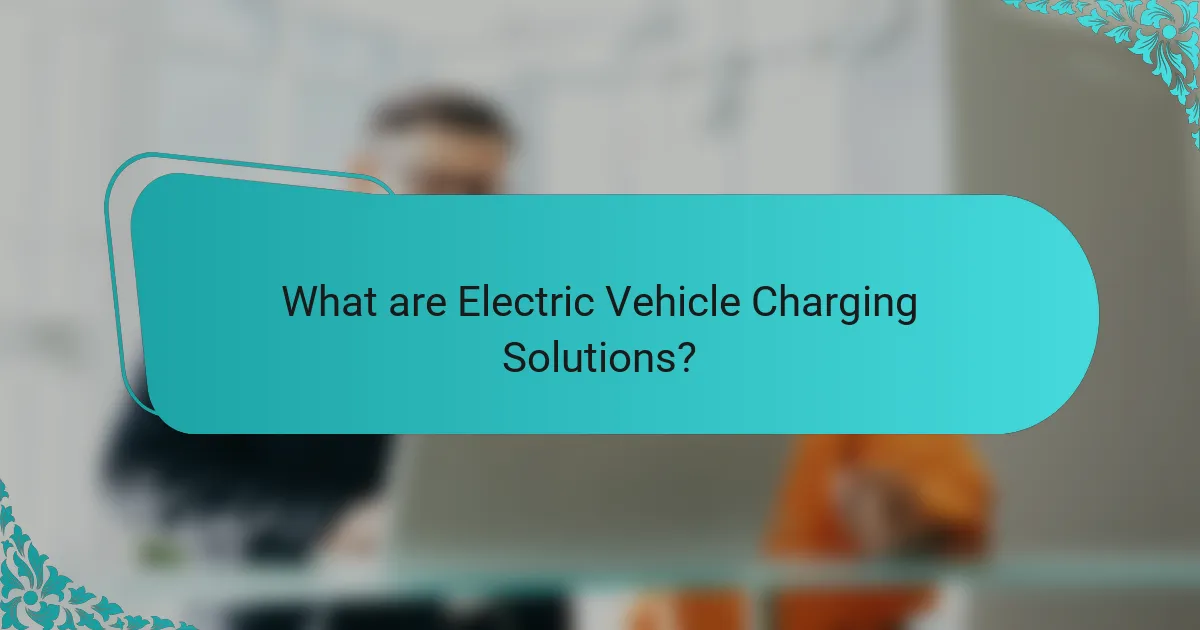
What are Electric Vehicle Charging Solutions?
Electric vehicle charging solutions are systems designed to provide electric energy to recharge electric vehicles (EVs). These solutions include various types of charging stations, such as Level 1, Level 2, and DC fast chargers. Level 1 chargers use standard household outlets and are suitable for overnight charging. Level 2 chargers require a dedicated circuit and offer faster charging times, typically found in public charging stations. DC fast chargers provide rapid charging capabilities, allowing EVs to charge up to 80% in about 30 minutes.
Charging solutions can be installed in residential, commercial, and public locations. The growth of these solutions is driven by the increasing adoption of electric vehicles and the need for convenient charging infrastructure. According to the International Energy Agency, global electric vehicle sales reached 6.6 million in 2021, highlighting the demand for effective charging solutions. These systems are essential for promoting the transition to sustainable transportation and reducing greenhouse gas emissions.
How do Electric Vehicle Charging Solutions function?
Electric vehicle charging solutions function by supplying electrical energy to electric vehicles (EVs) for battery replenishment. These solutions include various types of charging stations, such as Level 1, Level 2, and DC fast chargers. Level 1 chargers use standard household outlets and provide a slow charge, typically adding about 4-5 miles of range per hour. Level 2 chargers operate at 240 volts and can deliver 10-60 miles of range per hour, making them suitable for home and public charging. DC fast chargers use direct current to provide rapid charging, adding up to 80% charge in about 30 minutes for compatible vehicles.
Charging solutions are connected to the electrical grid, allowing them to draw power from it. They often include smart technology for monitoring and managing energy usage. Many charging stations offer payment options and can be integrated with mobile apps for user convenience. The efficiency of these solutions is crucial for maximizing the range and usability of electric vehicles.
What are the key components of Electric Vehicle Charging Solutions?
The key components of Electric Vehicle Charging Solutions include charging stations, power supply systems, and communication networks. Charging stations provide the physical infrastructure for connecting vehicles to the power source. Power supply systems ensure the delivery of electricity at the required voltage and amperage. Communication networks facilitate the exchange of data between the vehicle, charger, and backend systems. These components work together to enable efficient charging and management of electric vehicles. Effective integration of these elements enhances user experience and charging speed. Studies indicate that well-designed charging infrastructure can significantly reduce charging times and improve user satisfaction.
How do charging technologies impact efficiency?
Charging technologies significantly impact efficiency by determining how quickly and effectively electric vehicles are charged. Fast charging technologies, like DC fast charging, reduce charging time, enhancing user convenience and vehicle utilization. Higher charging power translates to less time spent at charging stations, which is crucial for fleet operations. Additionally, efficient charging technologies minimize energy loss during the charging process. For example, Level 2 chargers typically have an efficiency rate of around 90%, while DC fast chargers can reach up to 95%. This efficiency ensures that more of the energy drawn from the grid is used to charge the vehicle, optimizing overall energy consumption. The integration of smart charging solutions can further enhance efficiency by managing energy loads and reducing peak demand, leading to cost savings and improved grid stability.
What types of Electric Vehicle Charging Solutions are available?
There are three main types of electric vehicle charging solutions: Level 1, Level 2, and DC Fast Charging. Level 1 charging uses a standard 120-volt outlet. It is the slowest option, typically providing 3-5 miles of range per hour. Level 2 charging utilizes a 240-volt outlet. This method offers faster charging, delivering 10-60 miles of range per hour, depending on the vehicle and charger. DC Fast Charging, also known as Level 3, operates at 480 volts. It significantly reduces charging time, providing 60-100 miles of range in just 20-30 minutes. These solutions cater to different user needs, from home charging to public infrastructure.
What are the differences between Level 1, Level 2, and DC fast charging?
Level 1 charging uses a standard 120-volt outlet. It typically delivers 2 to 5 miles of range per hour. This method is slow and best for overnight charging at home.
Level 2 charging operates on a 240-volt outlet. It provides 10 to 60 miles of range per hour. This charging type is suitable for home, workplace, and public stations.
DC fast charging utilizes direct current to charge vehicles rapidly. It can deliver 60 to 100 miles of range in just 20 minutes. This method is commonly found at public charging stations along highways.
In summary, Level 1 is the slowest, Level 2 is faster and more versatile, while DC fast charging offers the quickest recharge times.
How do different charging solutions cater to various user needs?
Different charging solutions cater to various user needs by offering diverse charging speeds, accessibility options, and cost structures. Fast charging stations serve users who require quick refills during travel. Level 2 chargers are suitable for home use, providing convenience for daily charging needs. Public charging networks enhance accessibility for urban users without home charging capabilities. Additionally, some solutions offer subscription models, catering to users who prefer predictable costs. The growing availability of mobile apps helps users locate nearby charging stations, improving user experience. According to the U.S. Department of Energy, there are over 100,000 public charging ports in the U.S., demonstrating the increasing infrastructure to meet varied user demands.
What are the benefits of Electric Vehicle Charging Solutions?
Electric Vehicle Charging Solutions provide several key benefits. They enable convenient and efficient charging for electric vehicles. This convenience supports the growing adoption of electric vehicles. Charging solutions can be installed at home, workplaces, and public locations. This widespread availability enhances accessibility for users.
Additionally, many charging solutions utilize renewable energy sources. This reduces the overall carbon footprint associated with vehicle operation. Charging infrastructure can also lead to cost savings over time. Electric vehicles generally have lower operating costs compared to traditional vehicles.
Moreover, the development of charging solutions stimulates economic growth. It creates jobs in installation, maintenance, and technology development. According to the International Energy Agency, the number of public charging points increased by 60% globally in 2020. This growth reflects the increasing investment in electric vehicle infrastructure.
How do Electric Vehicle Charging Solutions contribute to sustainability?
Electric vehicle charging solutions contribute to sustainability by reducing greenhouse gas emissions. They facilitate the use of electric vehicles, which produce zero tailpipe emissions. This transition from fossil fuel-powered vehicles to electric ones decreases air pollution significantly. Furthermore, many charging solutions are powered by renewable energy sources. For example, solar or wind energy can be harnessed to charge electric vehicles. This further minimizes the carbon footprint associated with transportation. According to the International Energy Agency, electric vehicles could reduce global CO2 emissions by up to 1.5 gigatons annually by 2030. Therefore, the adoption of effective charging infrastructure is crucial for achieving sustainability goals.
What are the cost savings associated with Electric Vehicle Charging Solutions?
Electric Vehicle Charging Solutions offer significant cost savings. These savings primarily arise from reduced fuel costs compared to traditional gasoline vehicles. Electric vehicles (EVs) can cost approximately $0.04 to $0.06 per mile to operate, while gasoline vehicles average around $0.10 to $0.15 per mile.
Additionally, many charging solutions provide lower electricity rates during off-peak hours. This can further decrease operational costs for EV owners. The installation of charging infrastructure can also lead to savings in maintenance costs over time. Electric vehicles have fewer moving parts than internal combustion engines, which reduces maintenance frequency and expense.
Moreover, government incentives and rebates for EV charging infrastructure can offset initial installation costs. According to the U.S. Department of Energy, various states offer tax credits or rebates for both EV purchases and charging station installations. Collectively, these factors contribute to the overall cost savings associated with Electric Vehicle Charging Solutions.

How is Infrastructure Development for Electric Vehicle Charging Solutions evolving?
Infrastructure development for electric vehicle charging solutions is rapidly advancing. Increased investment from both public and private sectors is driving this evolution. Governments are implementing policies to support the installation of charging stations. For instance, the U.S. plans to invest $7.5 billion in charging infrastructure by 2026.
Technological innovations are enhancing charging speed and efficiency. Fast chargers are being deployed more widely, reducing charging time significantly. The integration of renewable energy sources is becoming common in new charging stations. This shift promotes sustainability and reduces reliance on fossil fuels.
Urban planning is adapting to accommodate charging infrastructure. Many cities are incorporating charging stations into new developments and retrofitting existing locations. The growth of electric vehicle adoption is also influencing infrastructure expansion. As more consumers choose electric vehicles, the demand for accessible charging solutions increases.
In summary, infrastructure development for electric vehicle charging solutions is evolving through increased investment, technological advancements, and urban planning adaptations.
What are the current trends in Electric Vehicle Charging infrastructure?
Current trends in Electric Vehicle Charging infrastructure include the expansion of fast-charging networks, increased integration of renewable energy sources, and the development of smart charging technologies. Fast-charging stations are becoming more prevalent along highways and urban areas. This allows for quicker charging times, often under 30 minutes. Renewable energy integration helps reduce the carbon footprint of charging stations. Solar panels and wind energy are increasingly used to power charging infrastructure. Smart charging technologies enable better energy management. These systems optimize charging times based on grid demand and electricity prices. Additionally, there is a rise in charging solutions for multi-family homes and workplaces. This trend addresses the need for accessible charging in diverse living environments. Overall, these trends reflect a shift towards more efficient and sustainable electric vehicle charging solutions.
How are cities adapting their infrastructure for Electric Vehicle Charging?
Cities are adapting their infrastructure for Electric Vehicle (EV) charging by increasing the number of charging stations. Many municipalities are installing charging points in public parking areas. This includes on-street charging solutions and dedicated EV parking lots. Cities are also collaborating with private companies to expand charging networks. Some are integrating charging stations into existing infrastructure, such as streetlights. Additionally, cities are prioritizing fast-charging stations to reduce wait times. They are also implementing policies to support the installation of home charging systems. According to the International Energy Agency, global EV charging infrastructure grew by 60% in 2020. This growth reflects a significant commitment to sustainable transportation.
What role do private companies play in infrastructure development?
Private companies play a crucial role in infrastructure development, particularly in the electric vehicle charging sector. They invest capital to build and operate charging stations. This investment accelerates the deployment of charging infrastructure. Private companies often collaborate with governments to enhance service availability. They bring innovation and efficiency to the development process. For example, companies like ChargePoint and Tesla have expanded charging networks significantly. Their efforts contribute to the overall growth of electric vehicle adoption. This partnership maximizes resource utilization and reduces public funding burdens.
What challenges are faced in developing Electric Vehicle Charging infrastructure?
Developing Electric Vehicle Charging infrastructure faces several challenges. One major challenge is the high initial investment required for installation. According to a report by the International Energy Agency, charging stations can cost between $10,000 and $40,000 each. Additionally, there is a lack of standardization in charging technology. This inconsistency complicates the integration of different charging systems.
Another challenge is the limited availability of suitable locations for charging stations. Urban areas often have space constraints, while rural areas may lack sufficient demand. Furthermore, the electrical grid needs upgrades to support increased power demands. The U.S. Department of Energy estimates that significant investments are necessary to modernize the grid for widespread EV adoption.
Lastly, public awareness and acceptance of Electric Vehicles also pose challenges. Many consumers remain unaware of the benefits of EVs and charging infrastructure. This can hinder the growth of the market and infrastructure development. Overall, these challenges must be addressed to facilitate the expansion of Electric Vehicle Charging infrastructure.
How can regulatory policies impact infrastructure development?
Regulatory policies significantly influence infrastructure development by setting standards and guidelines that govern construction and operation. These policies can dictate the types of materials used, safety protocols, and environmental considerations. For instance, specific regulations may require the inclusion of electric vehicle charging stations in new developments. This requirement can accelerate the adoption of electric vehicles by enhancing accessibility to charging solutions.
Moreover, regulatory frameworks can streamline the permitting process, reducing delays and costs associated with infrastructure projects. A study by the National Renewable Energy Laboratory found that efficient regulatory processes can cut project timelines by up to 30%. Conversely, overly stringent regulations may hinder development by increasing compliance costs and complexity.
In summary, regulatory policies play a crucial role in shaping the landscape of infrastructure development, particularly in the context of electric vehicle charging solutions.
What technological barriers exist in expanding charging networks?
Technological barriers in expanding charging networks include limited charging speed, inadequate grid capacity, and interoperability issues. Charging speed varies significantly among different charger types. Fast chargers can deliver up to 350 kW, while standard chargers may only provide 7 kW. This disparity affects user convenience and charging infrastructure deployment. Inadequate grid capacity can hinder the widespread installation of charging stations. Many local grids are not designed to handle the increased electricity demand from numerous charging points. Interoperability issues arise from different charging standards and protocols. These inconsistencies complicate the integration of various charging systems. Additionally, software and hardware compatibility can limit the scalability of charging networks. These technological challenges need addressing to facilitate the expansion of electric vehicle charging infrastructure.
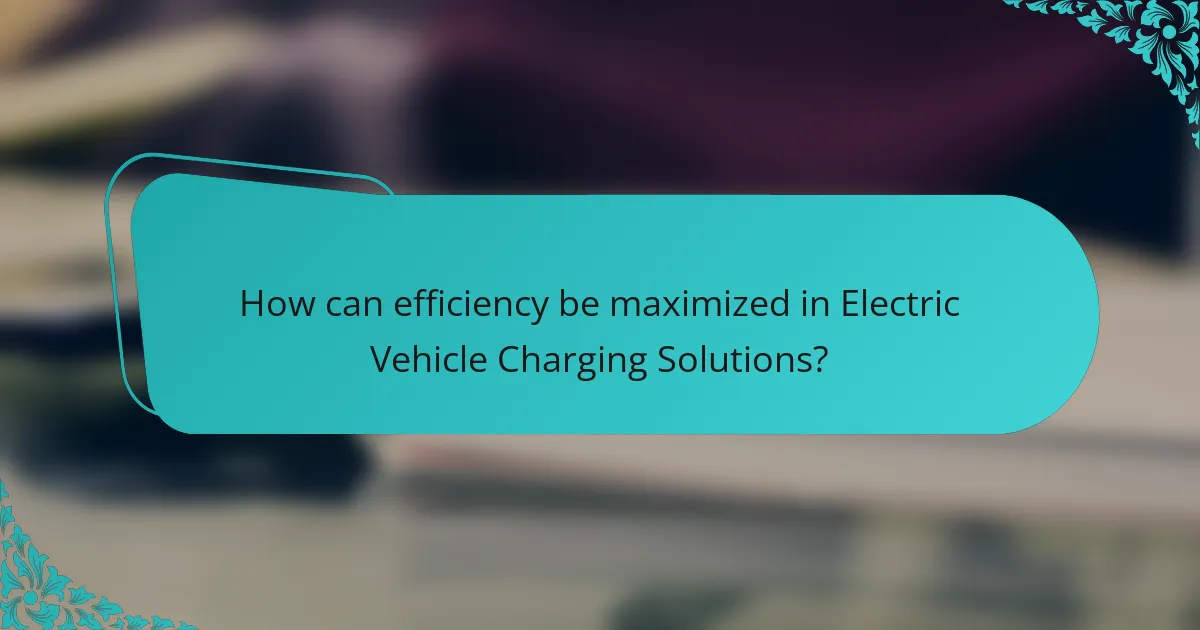
How can efficiency be maximized in Electric Vehicle Charging Solutions?
Efficiency in Electric Vehicle charging solutions can be maximized by utilizing high-capacity charging stations. These stations can deliver more power, reducing charging time significantly. Implementing smart charging technology further enhances efficiency by optimizing energy consumption based on grid demand. This technology can schedule charging during off-peak hours when electricity rates are lower. Additionally, using renewable energy sources for charging can improve overall efficiency and sustainability. According to the International Energy Agency, integrating renewable energy can reduce greenhouse gas emissions by up to 70% in EV charging. Regular maintenance of charging infrastructure also ensures optimal performance and reduces downtime.
What factors influence the efficiency of Electric Vehicle Charging?
The efficiency of Electric Vehicle (EV) charging is influenced by several key factors. These factors include charging station power output, battery capacity, and temperature. Higher power output from charging stations allows for faster charging times. Battery capacity impacts how much energy can be stored and utilized during charging. Temperature affects battery performance and charging rates, with extreme temperatures potentially reducing efficiency. Additionally, the state of charge (SoC) of the battery can influence charging speed; lower SoC typically allows for faster charging. Charging technology, such as Level 2 or DC fast charging, also plays a critical role in efficiency. According to the U.S. Department of Energy, DC fast chargers can deliver up to 80% charge in about 30 minutes, significantly improving charging efficiency compared to standard chargers.
How does charging speed affect overall efficiency?
Charging speed significantly affects overall efficiency in electric vehicle (EV) charging. Faster charging reduces the time an EV spends connected to a charging station. This increased convenience can lead to higher utilization rates of charging infrastructure.
Moreover, faster charging can improve energy transfer efficiency. Studies show that charging at optimal speeds minimizes energy loss during the charging process. For instance, charging at 50 kW can be more efficient than charging at lower rates due to reduced thermal losses.
Additionally, efficient charging speeds can influence battery health. Rapid charging can lead to increased heat generation, which may degrade battery lifespan over time. Therefore, balancing charging speed with battery management systems is crucial for maintaining overall efficiency.
In summary, charging speed impacts both the convenience of EV usage and the efficiency of energy transfer, while also affecting battery longevity.
What innovations are improving charging efficiency?
Innovations improving charging efficiency include advanced battery technologies, such as solid-state batteries. Solid-state batteries offer higher energy density and faster charging times compared to traditional lithium-ion batteries. Another innovation is the development of ultra-fast charging systems. These systems can deliver up to 350 kW of power, significantly reducing charging time for electric vehicles. Additionally, wireless charging technology is emerging. This technology allows for contactless charging, enhancing convenience and efficiency. Smart charging solutions are also being implemented. These solutions optimize charging times based on grid demand and energy costs. Lastly, vehicle-to-grid (V2G) technology is gaining traction. V2G allows electric vehicles to return energy to the grid, improving overall energy efficiency.
How can users optimize their Electric Vehicle charging experience?
Users can optimize their Electric Vehicle charging experience by planning their charging times and locations. Charging during off-peak hours can reduce costs. Utilizing fast chargers can significantly decrease charging duration. Users should also monitor their vehicle’s battery level to ensure timely charging. Employing mobile apps can help locate nearby charging stations easily. Regularly updating charging station information can prevent wasted time. Users should consider home charging setups for convenience. Finally, understanding the vehicle’s charging capabilities can maximize efficiency.
What best practices should users follow for efficient charging?
Users should follow several best practices for efficient charging of electric vehicles. First, charging during off-peak hours can reduce energy costs. Many utility companies offer lower rates during these times. Second, utilizing Level 2 chargers is recommended for faster charging. These chargers provide higher voltage and reduce charging time significantly. Third, keeping the battery between 20% and 80% charged can enhance battery longevity. This practice avoids deep discharges and overcharging, which can degrade battery health. Fourth, users should regularly update their vehicle’s software. Manufacturers often release updates that improve charging efficiency. Lastly, users should monitor their charging habits through apps. These tools can provide insights into usage patterns and suggest optimizations. Following these practices can lead to more efficient and cost-effective charging experiences.
How can users select the best charging solution for their needs?
Users can select the best charging solution for their needs by evaluating several key factors. First, consider the type of electric vehicle (EV) being used. Different EVs have varying battery capacities and charging requirements. Second, assess the charging speed needed. Level 1 chargers are slower, while Level 2 and DC fast chargers provide quicker options. Third, analyze the charging location. Home charging may require different equipment compared to public charging stations. Fourth, review the cost of installation and ongoing electricity rates. Users should also check for available incentives or rebates for charging solutions. Finally, consult user reviews and expert recommendations to understand reliability and performance. These steps ensure that users choose a charging solution that aligns with their specific needs and circumstances.
What are the future prospects for Electric Vehicle Charging Solutions?
The future prospects for Electric Vehicle Charging Solutions are promising and multifaceted. The global shift towards electric vehicles is driving demand for robust charging infrastructure. Governments are investing heavily in charging networks to support this transition. Research indicates that by 2030, there could be over 30 million public charging points worldwide. Technological advancements are improving charging speed and efficiency, reducing wait times for users. Innovations like ultra-fast charging could enable vehicles to charge in under 15 minutes. Additionally, integration with renewable energy sources is becoming more common, enhancing sustainability. The market for charging solutions is expected to grow significantly, with estimates suggesting a value of over $100 billion by 2027. This growth reflects the increasing adoption of electric vehicles and the need for accessible charging options.
How will advancements in technology shape charging solutions?
Advancements in technology will significantly enhance charging solutions for electric vehicles. Innovations such as faster charging protocols will reduce charging time. For instance, ultra-fast chargers can deliver up to 350 kW, allowing vehicles to gain significant range in just minutes. Wireless charging technology will also emerge, enabling seamless charging without physical connections. Smart grid integration will optimize energy distribution, making charging more efficient. Additionally, advancements in battery technology will increase energy density, allowing for longer ranges and shorter charging cycles. According to a study by the International Energy Agency, improved charging infrastructure is essential for the widespread adoption of electric vehicles. These technological advancements will ultimately lead to cost savings for consumers and reduced strain on power grids.
What trends should consumers watch for in Electric Vehicle Charging Solutions?
Consumers should watch for advancements in fast charging technology in Electric Vehicle Charging Solutions. Fast charging stations are becoming more common, reducing charging time significantly. Many manufacturers are developing ultra-fast chargers that can provide 80% charge in under 30 minutes. Another trend is the integration of renewable energy sources. Charging stations powered by solar or wind energy are gaining popularity. This shift supports sustainability and reduces reliance on fossil fuels. Additionally, wireless charging technology is emerging. This innovation allows for charging without physical connections, enhancing convenience for users. Finally, consumers should note the rise of smart charging solutions. These systems optimize charging times based on grid demand and energy costs, providing cost savings.
What practical tips can enhance the use of Electric Vehicle Charging Solutions?
To enhance the use of Electric Vehicle Charging Solutions, prioritize the installation of charging stations in high-traffic areas. This increases accessibility for users. Implement fast charging options to reduce wait times, improving user experience. Utilize smart charging technology to optimize energy consumption during off-peak hours. Encourage businesses to offer charging as an amenity to attract customers. Provide clear signage for charging locations to aid navigation. Educate users on optimal charging practices to extend battery life. Collaborate with local governments for incentives that support charging infrastructure development. These strategies collectively improve the effectiveness and adoption of electric vehicle charging solutions.
Electric Vehicle Charging Solutions encompass systems designed to recharge electric vehicles (EVs) through various types of charging stations, including Level 1, Level 2, and DC fast chargers. This article details the functionality, components, and efficiency of these charging solutions, highlighting their role in promoting sustainable transportation and reducing greenhouse gas emissions. It also examines the benefits, cost savings, and evolving infrastructure development associated with electric vehicle charging. Additionally, current trends and future prospects in charging technology, including the integration of renewable energy and advancements in efficiency, are discussed to provide a comprehensive understanding of the electric vehicle charging landscape.
